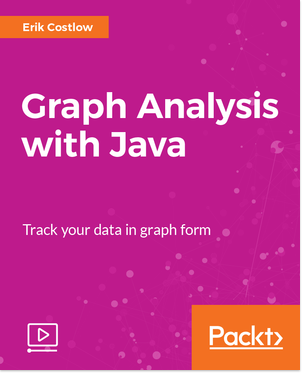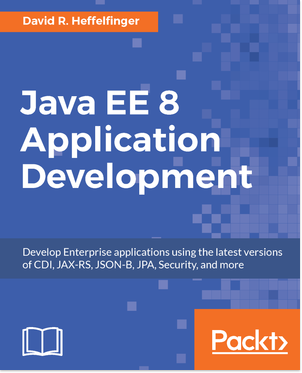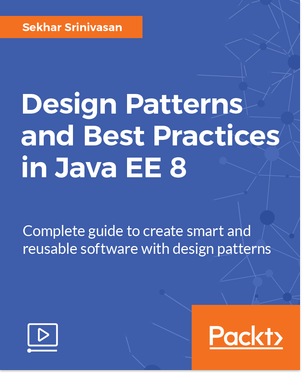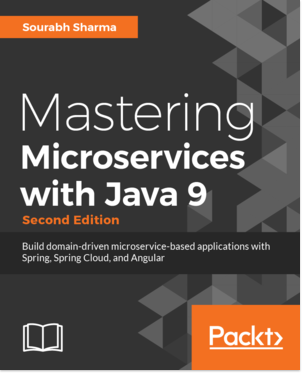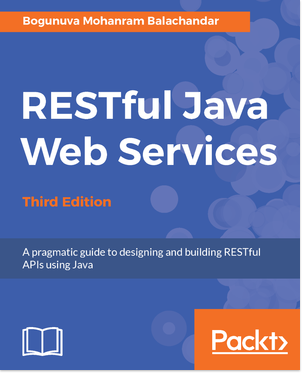$5 Java Programming Books from Packt and Java Code Geeks!
Hello fellow Geeks! Today, we have some exciting news for you! Java Code Geeks and Packt have teamed up to offer you weekly discounts on their extensive library of books.
Still one of the most powerful choices for developers, Java is the language that defines both enterprise and mobile
This week, we are offering discounts on Java related books to help you understand and master Java. They are all deeply discounted to just $5 per book! Check them out!
Graph Analysis with Java [Video]
By Erik Costlow
This video course will help you to ensure that you track relationships in your data in a graphical form in a step-by-step manner.
Graph analysis helps you track relationships between data points to identify associations, clusters, and patterns. This video course will begin by understanding how to track data in graph form so that you can take advantage of these techniques and understand the various graph database components. You will also learn how to make a basic graph and view, interact with your graphs, and perform analysis like cluster detection and statistical calculations. Towards the end of the video course, you will walk through a real-world graph analysis problem using Java to read your email communications and graph them for cluster detection.
Java EE 8 Application Development
By David R. Heffelfinger
Java EE is an Enterprise Java standard. Applications written to comply with the Java EE specification do not tie developers to a specific vendor; instead they can be deployed to any Java EE compliant application server. With this book, you’ll get all the tools and techniques you need to build robust and scalable applications in Java EE 8. This book covers all the major Java EE 8 APIs including JSF 2.3, Enterprise JavaBeans (EJB) 3.2, Contexts and Dependency Injection (CDI) 2.0, the Java API for WebSockets, JAX-RS 2.1, Servlet 4.0, and more.
The book begins by introducing you to Java EE 8 application development and goes on to cover all the major Java EE 8 APIs. It goes beyond the basics to develop Java EE applications that can be deployed to any Java EE 8 compliant application server.
It also introduces advanced topics such as JSON-P and JSON-B, the Java APIs for JSON processing, and the Java API for JSON binding. These topics dive deep, explaining how the two APIs (the Model API and the Streaming API) are used to process JSON data.
Moving on, we cover additional Java EE APIs, such as the Java API for Websocket and the Java Message Service (JMS), which allows loosely coupled, asynchronous communication. Further on, you’ll discover ways to secure Java EE applications by taking advantage of the new Java EE Security API.
Finally, you’ll learn more about the RESTful web service development using the latest JAX-RS 2.1 specification. You’ll also get to know techniques to develop cloud-ready microservices in Java EE.
Design Patterns and Best Practices in Java EE 8 [Video]
By Sekhar Srinivasan
This video takes you through an easy and practical step-by-step approach on how to create patterns and best practices using Java EE8.
Design patterns may be viewed as a structured approach to computer programming. A software design pattern is a general reusable solution to a commonly occurring problem within a given context in software design. It is not a finished design that can be transformed directly into source or machine code; it is a description or template for how to solve a problem that can be used in many different situations.
The course delves into a vast number of design patterns to help developers select the best practices and see how those are implemented in Java. You will understand the reasons why patterns are so important and learn when and how to apply each one practically in real world application development
Beginning with the most common Gang of Four patterns and progressing to newer patterns, we will learn their Java EE specific implementations. In this course, we shall understand the most commonly used design patterns in the Java World while developing Enterprise Application development. In this video, you will learn how Java EE offers implementation of many patterns through annotations and a cleaner programming model. You will learn the implementation of key patterns using Java EE including Facade, Singleton, Factory, Decorator, Observer.
Mastering Microservices with Java 9 – Second Edition
By Sourabh Sharma
Microservices are the next big thing in designing scalable, easy-to-maintain applications. It not only makes app development easier, but also offers great flexibility to utilize various resources optimally. If you want to build an enterprise-ready implementation of the microservices architecture, then this is the book for you!
Starting off by understanding the core concepts and framework, you will then focus on the high-level design of large software projects. You will gradually move on to setting up the development environment and configuring it before implementing continuous integration to deploy your microservice architecture. Using Spring security, you will secure microservices and test them effectively using REST Java clients and other tools like RxJava 2.0. We’ll show you the best patterns, practices and common principals of microservice design and you’ll learn to troubleshoot and debug the issues faced during development. We’ll show you how to design and implement reactive microservices. Finally, we’ll show you how to migrate a monolithic application to microservices based application.
By the end of the book, you will know how to build smaller, lighter, and faster services that can be implemented easily in a production environment.
RESTful Java Web Services – Third Edition
By Bogunuva Mohanram Balachandar
Representational State Transfer (REST) is a simple yet powerful software architecture style to create lightweight and scalable web services. The RESTful web services use HTTP as the transport protocol and can use any message formats, including XML, JSON(widely used), CSV, and many more, which makes it easily inter-operable across different languages and platforms.
This successful book is currently in its 3rd edition and has been used by thousands of developers. It serves as an excellent guide for developing RESTful web services in Java.
This book attempts to familiarize the reader with the concepts of REST. It is a pragmatic guide for designing and developing web services using Java APIs for real-life use cases following best practices and for learning to secure REST APIs using OAuth and JWT. Finally, you will learn the role of RESTful web services for future technological advances, be it cloud, IoT or social media.
By the end of this book, you will be able to efficiently build robust, scalable, and secure RESTful web services using Java APIs.

